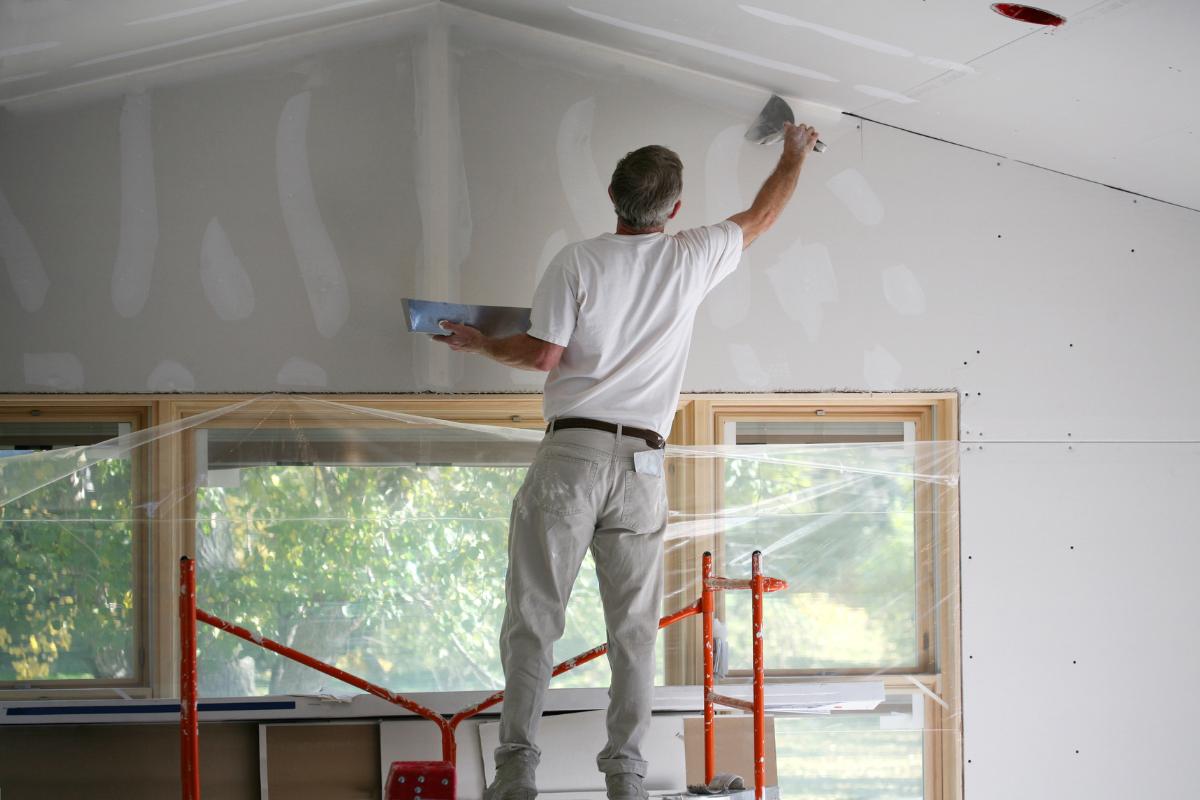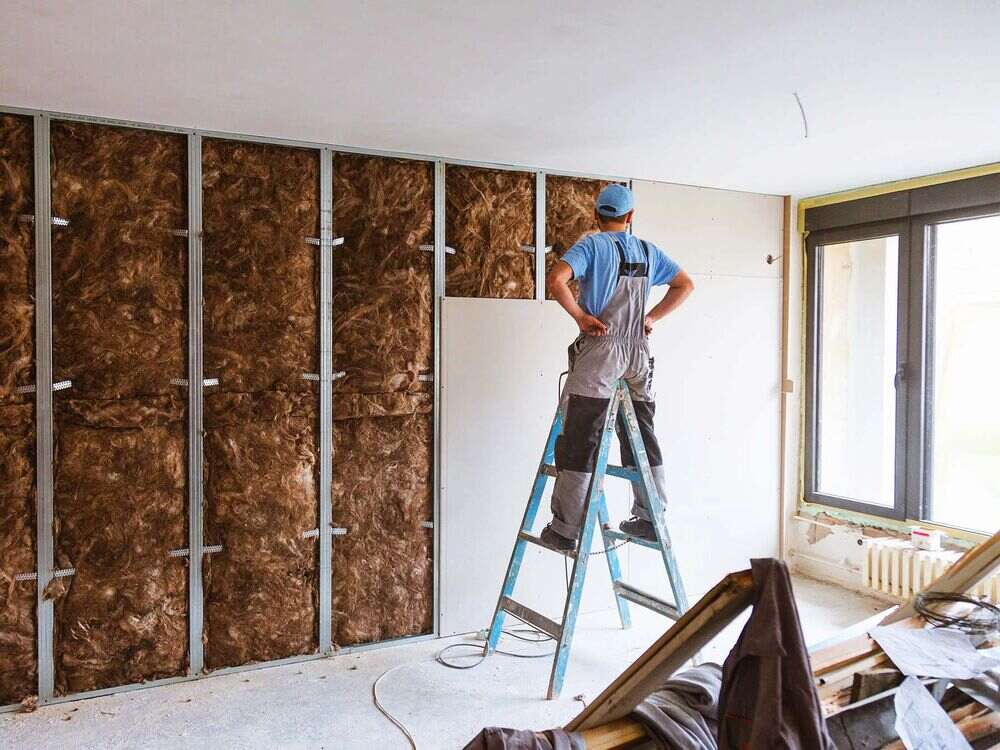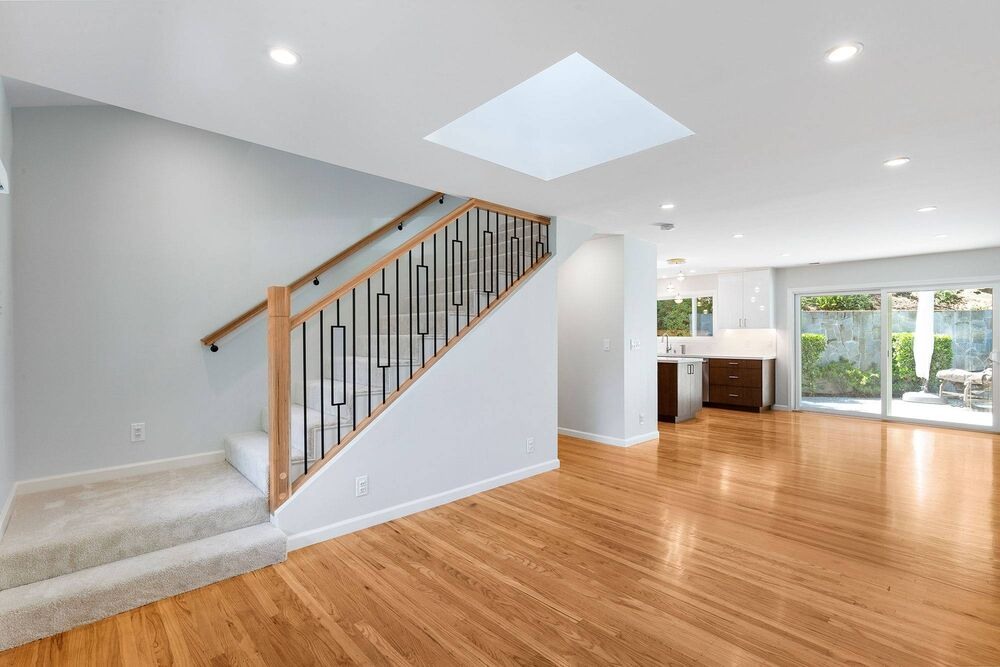
Hiring Drywall Repair Services? Here’s Everything You Should Expect
Hiring drywall repair services is an important step in restoring the beauty, safety, and value of any home or business space. Whether dealing with small cracks, large holes, or damaged seams, choosing the right team ensures the repair work is strong, smooth, and long-lasting.
Reliable drywall repair services not only improve the look of walls but also help maintain structural integrity. Knowing what to expect before hiring can make the entire process easier and lead to better results.
Table of Contents
Key Takeaways✔ A professional team will assess the damage thoroughly and provide a clear repair plan before starting any work. ✔ Homeowners can expect a detailed and honest estimate with no hidden costs or surprise fees. ✔ Experienced technicians with proper training and a proven track record will handle all aspects of the repair. ✔ Only high-quality drywall, joint compounds, and patching materials will be used to ensure lasting results. ✔ The repair team will complete the work efficiently while maintaining a clean and protected environment. ✔ All repairs will blend flawlessly into the surrounding surface, leaving no visible signs of damage. ✔ A strong warranty or satisfaction guarantee will protect the work and provide peace of mind after the project is complete. |

7 Key Things to Expect from Drywall Repair Services
1. Initial Consultation and Assessment
When hiring drywall repair services, the first step should always be an initial consultation. During this process, the contractor carefully inspects the damage, identifies any hidden issues, and provides expert recommendations for the best repair approach. Clear communication during the consultation is critical, as miscommunication is one of the most common causes of project failure.
Key Elements of a Detailed Inspection
A professional drywall patching company will never guess the extent of the problem. Instead, they perform a detailed inspection to ensure every issue is addressed correctly.
- Visual Examination: The technician carefully checks for cracks, holes, water damage, and structural weaknesses across the walls and ceilings. By using the best drywall repair techniques, they ensure that no minor or hidden issue is left untreated.
- Damage Measurement: Precise measurements of affected areas are taken to determine the right solution, whether small touch-ups or large drywall hole patching are needed. This helps in preparing the right materials and planning a repair that will be both strong and seamless.
- Material Assessment: The quality and type of existing drywall material are noted to match the repair with the rest of the wall. This step is essential for effective professional drywall patching that blends naturally with surrounding surfaces.
Repair Options and Techniques
After the inspection, a clear conversation about the repair plan should follow. Homeowners should expect practical advice based on the best drywall repair techniques.
- Small Area Repair Plans: If the damage is minimal, professional drywall patching methods will restore the wall efficiently with minimal disruption. Using advanced tools and techniques ensures the finished repair looks flawless and durable.
- Large Hole Solutions: In cases requiring large drywall hole patching, more extensive work such as cutting, reinforcing, and blending will be explained in detail. Professional drywall repair services will always suggest sturdy backing solutions to prevent future cracking.
- Seam And Joint Corrections: For cracked or separated walls, drywall seam and joint repair options are presented to ensure a flawless finish. This process typically involves proper taping, mudding, and sanding for long-lasting results.
- Surface Matching Advice: Contractors should offer recommendations for texture matching, repainting, and blending so that repairs are completely invisible. Proper finishing is a key part of drywall repair services to maintain the original look of the walls.
2. Clear and Transparent Pricing
When hiring drywall repair services, clear and upfront pricing is one of the first things a homeowner should expect. A trustworthy company provides all costs before starting any work, ensuring there are no hidden fees or surprises along the way.
Detailed, Written Estimate
At the start of the project, a detailed, written estimate should always be provided. This document clearly outlines every expected cost, helping the homeowner understand exactly what is being paid for and why. Providing full transparency is important, especially since a survey by Consumer Reports found that over 85% of Americans have encountered hidden fees in the past three years.
- Scope of Work: The estimate should clearly explain what areas of the drywall will be repaired, including whether the project involves professional drywall patching or drywall seam and joint repair.
- Itemized Costs: Each section of the work should be broken down, covering labor, materials, and any additional service fees.
- Timeline and Payment Terms: The expected start and completion dates, along with payment schedules, should be included for transparency.
Pricing Factors
Different elements can affect the final cost of drywall repair services. Homeowners should expect the contractor to explain these factors clearly before work begins.
- Size and Severity of Damage: Larger holes or more severe wall issues often require large drywall hole patching techniques, which take more time and materials to complete compared to smaller repairs.
- Materials Used: The choice of materials directly impacts the price. High-quality drywall and joint compounds, often necessary for professional drywall patching, can cost more but provide better, longer-lasting results.
- Labor and Skill Level: Repairing drywall using the best drywall repair techniques demands skilled labor, which can influence the cost. Professional work, especially for drywall seam and joint repair, ensures a smooth, seamless finish that looks like new.
- Additional Services: Some projects may require priming, painting, or texturing after the repair. These services add to the cost but complete the look of the wall.
3. Professional Expertise and Experience
Professional drywall repair services in Southbury, CT, require a team that is not only skilled but also highly qualified. Homeowners should always expect a company to bring a high level of professionalism, built on training, certification, and years of hands-on work.
Why Hire Skilled Technicians
Technicians should always have the necessary background to perform everything from simple fixes to large drywall hole patching. A company’s experience level speaks volumes about the quality of work that can be expected.
- Training And Certification: Technicians should be properly trained and, when required by state or local regulations, licensed to perform drywall work legally and safely. Proper training ensures the use of the best drywall repair techniques for long-lasting results.
- Hands-On Experience: Real-world experience is critical. It equips technicians to handle a range of issues, from minor drywall seam and joint repair to more complex structural damage.
- Problem-Solving Ability: Experienced technicians know how to assess underlying issues, like moisture damage or framing problems, that could affect the repair quality.
- Use Of Professional Drywall Patching Methods: Trained teams are skilled in using professional drywall patching methods to ensure repairs are smooth and blend seamlessly into the existing wall structure.
Verifying Past Work and References
Reputable drywall repair services should be willing to showcase their past work and provide references upon request.
- Portfolio of Past Projects: A trustworthy company should have a collection of photos or case studies demonstrating various repairs, including large drywall hole patching and fine detail work like drywall seam and joint repair. Viewing these examples allows customers to judge the quality of craftsmanship.
- Client Testimonials and Reviews: Positive feedback from previous clients provides insights into the company’s reliability, communication, and quality of service.
- Before-And-After Examples: Companies that use the best drywall repair techniques are proud to share before-and-after images, highlighting the skill of their professional drywall patching and seamless repairs.
4. Use of Quality Materials
Choosing drywall repair services should always involve attention to the quality of materials being used. High-grade materials ensure repairs that are not only visually seamless but also long-lasting. When poor materials are used, cracks, visible patches, and frequent touch-ups are much more likely.
Why High-Grade Drywall and Supplies Matters
Professional drywall patching depends heavily on using the right products from the start. Trusted companies focus on selecting materials that match the original structure for both appearance and strength.
- High-Quality Drywall Sheets: Professionals use premium drywall panels that match the wall’s thickness, type, and texture, helping repairs look natural.
- Top-Tier Joint Compounds: Quality compounds create a smooth and durable bond, ensuring the repaired area blends into the existing wall without visible edges.
- Reliable Repair Tools: Advanced tools, such as precision sanding equipment and specialized trowels, help create a professional finish faster and with better results.
5. Efficient and Clean Work Process
Hiring drywall repair services should always include an efficient and clean work process. A professional team understands the importance of completing the job properly without leaving a mess behind.
Timely Completion of Repairs
Choosing the right service ensures that repairs are completed within a reasonable timeframe. Whether it is a simple drywall seam and joint repair or a larger project, efficiency shows a company’s professionalism.
- Clear Timeline Provided: A reputable company will offer a clear timeline before starting the project, so homeowners know what to expect and how long the work will take.
- Prompt Start and Finish: Professional drywall patching teams begin work promptly and stick to the schedule to avoid unnecessary delays.
- Fast Yet Thorough Repairs: Quality should not be sacrificed for speed. The best drywall repair techniques allow for fast, durable results without cutting corners.
Clean Worksite Practices
Professional drywall repair services also maintain a clean and safe work environment during and after the project. This is especially important for maintaining indoor air quality and protecting furniture or floors from dust and debris.
- Protective Coverings Used: Workers should use plastic sheeting, drop cloths, and masking tape to shield floors, furniture, and other surfaces from dust and paint splatter.
- Daily Cleanup Procedures: After each day’s work, a professional team will sweep up dust, remove debris, and leave the space as clean as possible.
- Proper Dust Containment Methods: To minimize airborne dust, contractors may use specialized tools and sanding equipment equipped with vacuum systems, especially during large drywall hole patching.
Why Quality Workmanship is Crucial
A clean and efficient process is a sign of attention to detail. Using the best drywall repair techniques ensures the repaired areas match the existing walls perfectly. Whether completing a minor drywall seam and joint repair or addressing major damage, experienced teams deliver results that look seamless and last long.
- Blending New and Old Surfaces: Proper texture matching and painting techniques ensure that the repaired area is indistinguishable from the original wall.
- Attention to Final Touches: A skilled professional will inspect every inch of the repair, double-checking seams, joints, and edges to ensure a flawless finish.

6. Seamless Finishing
Drywall repair is not complete without a perfect finish. Homeowners should expect that once the damage is patched, the repaired area will look exactly like the rest of the wall. A quality finish is what separates average drywall repair services from truly professional drywall patching.
Preparing the Surface for a Flawless Finish
Before finishing, the surface must be properly prepared. This step ensures the final look is smooth and natural.
- Surface Cleaning: Dust, debris, and loose drywall particles are carefully removed to ensure materials bond properly.
- Surface Priming: A primer coat is applied to create a uniform base that helps paint adhere evenly and prevents future peeling.
Applying the Best Drywall Repair Techniques
Professional drywall patching uses the best drywall repair techniques to make sure repairs are invisible to the eye.
- Skim Coating: A thin layer of joint compound is spread over the patch to even out minor imperfections and blend edges into the existing wall.
- Feathering Edges: Repair edges are feathered outward with lighter pressure to create a seamless transition between new and old surfaces.
Priming, Painting, and Texturing
Each step after patching plays a role in making sure the repair disappears into the wall.
- Primer Application: A coat of primer ensures that paint soaks in evenly and that patched areas do not stand out once painted.
- Precise Painting: Color-matched paint is carefully applied to blend the repaired section with the surrounding wall, requiring a steady hand and good technique.
- Matching Textures: If the wall has a specific texture (such as orange peel or knockdown), the repair team recreates it using specialized tools and methods, ensuring the new section matches exactly.
Handling Large Drywall Hole Patching
Large drywall hole patching requires extra attention to maintain a seamless look.
- Installing Support Backing: For holes larger than a few inches, professionals install a backing material behind the patch to give the new piece strength and prevent future sagging.
- Blending Seams And Joints: Drywall seam and joint repair techniques, like layering joint tape and multiple coats of compound, are critical to making the new section look natural and strong.
7. Warranty or Satisfaction Guarantee
A good drywall repair service does not just fix a problem; it stands behind the work long after the project is complete. Homeowners should always expect clear warranties or satisfaction guarantees when hiring professionals.
Types of Warranties
Warranties are not just formalities—they are critical protections that safeguard against future issues. Professional drywall patching should last, and warranties show a commitment to quality.
- Workmanship Warranty: Covers problems due to poor installation or low-quality repairs.
- Material Warranty: Protects against defects in the drywall, joint compound, or patching materials used.
Terms That Should Always Be Clear
Before signing a contract, customers should receive detailed information about what the warranty includes, how long it lasts, and what steps to take if something goes wrong.
- Coverage Details: Describes exactly what issues are covered, such as cracking, bulging, or paint peeling due to poor drywall seam and joint repair.
- Warranty Period: Clearly states how long the coverage lasts, typically ranging from one to five years depending on the service.
- Repair or Refund Policy: Outlines whether the company will fix problems at no charge or offer a partial or full refund.
What to Expect When Reporting a Problem
If problems arise after repair, the company should handle them professionally and promptly. Homeowners should never feel abandoned after the job is done.
- Easy Contact Process: Provides clear instructions for reaching customer support or the repair team.
- Quick Response Time: Promises a timely inspection and solution, usually within a few days.
- No Hidden Costs: Guarantees that any warranty-covered repair work is done without additional charges.
Why Warranties Matter in Professional Drywall Patching
A focus on guarantees shows that the company is invested in the homeowner’s satisfaction for the long term. Whether it’s a small patch or large drywall hole patching, proper guarantees back up professional drywall patching work.
- Long-Term Protection: Gives homeowners confidence that repairs will last without future headaches.
- Professional Accountability: Encourages companies to perform repairs correctly the first time using the best drywall repair techniques.
- Better Customer Experience: Ensures that if anything goes wrong, homeowners know exactly who to call and what to expect.
Frequently Asked Questions
How do I know if my drywall needs to be repaired or replaced?
You should assess the extent and type of damage to decide if repair or replacement is necessary. Small cracks, nail pops, or dents usually only require simple patching and refinishing. However, larger holes, widespread water damage, or mold growth may mean that replacing sections is a better option. If the drywall feels soft, spongy, or is severely stained, replacement is often recommended.
What materials are needed for drywall repair?
Drywall repair typically requires joint compound, a drywall patch, drywall tape, sandpaper, and a putty knife. For larger repairs, you may also need a drywall saw, new drywall sheets, and screws. Having a primer and paint on hand is essential for blending the repaired area with the surrounding wall. Some kits include everything necessary for smaller repairs, making the process easier for DIYers.
How long does drywall repair take?
The time needed for drywall repair depends on the size and complexity of the damage. Small patches might only take a few hours, including drying time for joint compound. Larger repairs that require cutting, installing new drywall, taping, mudding, sanding, and painting can span a few days. Each layer of joint compound needs sufficient drying time before sanding and painting.
Why is my drywall cracking?
Drywall can crack for several reasons, including the natural settling of a house, temperature fluctuations, and humidity changes. Poor installation techniques, such as not using enough drywall screws or failing to properly tape seams, can also lead to cracks. Sometimes, structural issues like foundation shifting can cause visible cracks in the walls or ceilings. Moisture problems can weaken the drywall, leading to stress and eventual cracking.
Can drywall dust be harmful?
Yes, drywall dust can be harmful if inhaled in large amounts over time. It can irritate the eyes, nose, throat, and lungs, causing respiratory issues especially in poorly ventilated areas. Prolonged exposure might lead to more serious conditions like chronic bronchitis. Always use protective gear such as masks, goggles, and ensure good ventilation when sanding drywall.
Schedule Trusted Drywall Repairs With Experienced Professionals!
Dependable drywall repair services are essential for maintaining a polished and durable interior. Southbury House Painting Experts proudly offers skilled drywall repair solutions throughout Southbury, CT. From handling detailed drywall seam and joint repair to large drywall hole patching, every project receives careful attention and professional craftsmanship. Homeowners trust Southbury House Painting Experts for quality results.
Call Southbury House Painting Experts today to book a drywall assessment.
